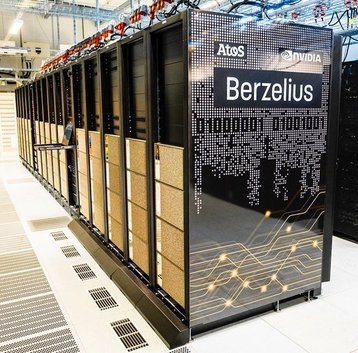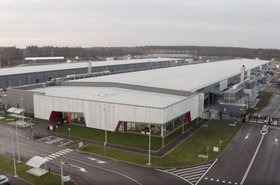Linköping University in Sweden has received a SEK 125 million ($12.2 million) grant to upgrade its Berzelius AI supercomputer.
The donation was made by the Knut and Alice Wallenberg Foundation, an organization that supports long-term, free, and basic research that benefits Sweden, largely across the medicine, technology, and natural sciences sectors.
Housed in the National Supercomputer Centre (NSC) at the university in Linköping, Berzelius is currently comprised of an Nvidia Superpod equipped with 94 DGX A100 systems with 8 A100 GPUs per node and InfiniBand networking.
It has 470 AI petaflops of performance (FP16) and an HPL (high-performance Linpack) benchmark score of 5.25 petaflops. The system was ranked 171 on the most recent Top500 list of the world’s most powerful supercomputers.
The machine was originally funded by the foundation, and since it was first installed in 2021 has been used to train the large-scale Swedish language model GPT-SW3 and train new systems for computer vision and generate synthetic medical images for the training of doctors.
The system has already been upgraded once before in 2023, with this next upgrade due to take place in the Fall of 2024 set to double Berzelius’ capacity.
“The increasing demand and the growing applications of AI make an upgrade of Berzelius essential,” said Peter Wallenberg Jr, chair of the Knut and Alice Wallenberg Foundation.
Vice chancellor Jan-Ingvar Jönsson at Linköping University added: "With an upgrade of Berzelius, and the new supercomputer Arrhenius soon in place, we’re equipped to make a decisive contribution to European research.”
The system is named after Swedish scientist Jacob Berzelius, who hailed from the Östergötland region where Linköping is located. Along with discovering silicon, Berzelius invented the system of chemical notation, for example using O for oxygen or Fe for iron.
In addition to the Berzelius system, the NSC hosts and operates the 3 petaflops Tetralith; the Sigma HPC cluster; Cirrus, Stratus, and Nebula which are all used for operational weather forecasting; the 326 teraflops Bi; and Freja, which is primarily used for climate, meteorology and oceanography.
In July 2023, it was announced that the NSC would house and operate the 30 petaflops Arrhenius supercomputer, co-funded by the European High-Performance Computing Joint Undertaking and the Swedish Research Council’s funding for research infrastructure.







